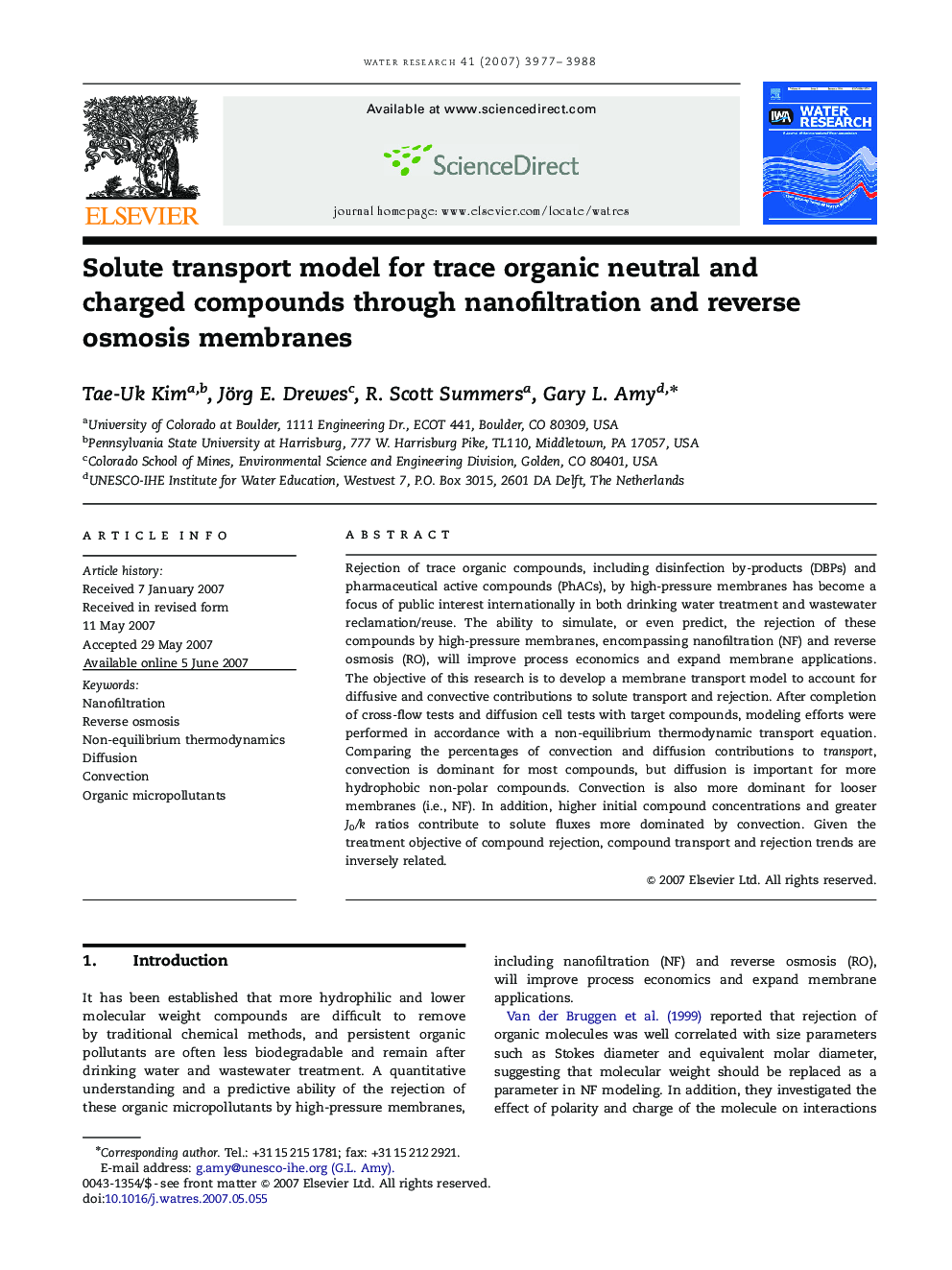| کد مقاله | کد نشریه | سال انتشار | مقاله انگلیسی | نسخه تمام متن |
|---|---|---|---|---|
| 4486083 | 1316974 | 2007 | 12 صفحه PDF | دانلود رایگان |

Rejection of trace organic compounds, including disinfection by-products (DBPs) and pharmaceutical active compounds (PhACs), by high-pressure membranes has become a focus of public interest internationally in both drinking water treatment and wastewater reclamation/reuse. The ability to simulate, or even predict, the rejection of these compounds by high-pressure membranes, encompassing nanofiltration (NF) and reverse osmosis (RO), will improve process economics and expand membrane applications. The objective of this research is to develop a membrane transport model to account for diffusive and convective contributions to solute transport and rejection. After completion of cross-flow tests and diffusion cell tests with target compounds, modeling efforts were performed in accordance with a non-equilibrium thermodynamic transport equation. Comparing the percentages of convection and diffusion contributions to transport, convection is dominant for most compounds, but diffusion is important for more hydrophobic non-polar compounds. Convection is also more dominant for looser membranes (i.e., NF). In addition, higher initial compound concentrations and greater J0/k ratios contribute to solute fluxes more dominated by convection. Given the treatment objective of compound rejection, compound transport and rejection trends are inversely related.
Journal: Water Research - Volume 41, Issue 17, September 2007, Pages 3977–3988